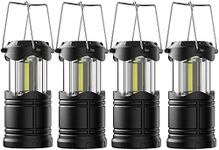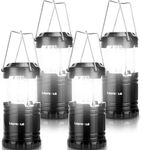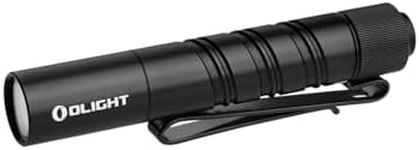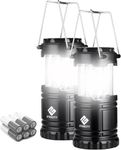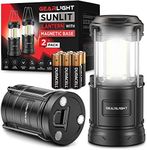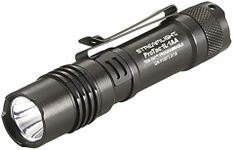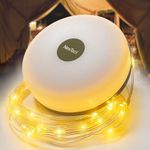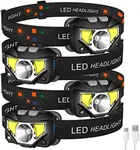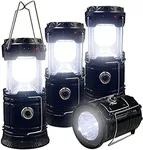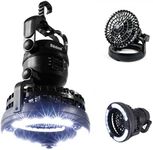Buying Guide for the Best Camping Lights
Choosing the right camping light can significantly enhance your outdoor experience, providing you with the necessary illumination for various activities such as cooking, reading, or navigating your campsite. When selecting a camping light, consider the type of camping you will be doing, the environment, and your specific needs. Here are some key specifications to help you make an informed decision.Brightness (Lumens)Brightness, measured in lumens, indicates how much light a camping light emits. This is important because it determines how well you can see in the dark. For general campsite use, 100-200 lumens is usually sufficient. For tasks that require more light, such as cooking or reading, you might need 200-400 lumens. If you need to light up a larger area or for safety purposes, consider lights with 400 lumens or more. Choose the brightness level based on the activities you plan to do and the size of the area you need to illuminate.
Battery LifeBattery life indicates how long the camping light will last on a single charge or set of batteries. This is crucial for ensuring you have light throughout your trip. Shorter trips or occasional use might be fine with a light that lasts 5-10 hours. For longer trips or frequent use, look for lights with 20 hours or more of battery life. Consider your trip duration and how often you will use the light to determine the appropriate battery life.
Power SourceCamping lights can be powered by various sources, including disposable batteries, rechargeable batteries, or solar power. Disposable batteries are convenient but can be costly and less environmentally friendly. Rechargeable batteries are more sustainable and cost-effective in the long run but require access to a power source for recharging. Solar-powered lights are eco-friendly and great for extended trips but depend on sunlight availability. Choose a power source based on your access to power and environmental considerations.
PortabilityPortability refers to the ease with which you can carry and transport the camping light. This is important for backpackers or those with limited space. Smaller, lightweight lights are ideal for backpacking and easy to pack. Larger lights may offer more features but can be bulkier and heavier. Consider the size and weight of the light in relation to your mode of travel and available space.
DurabilityDurability indicates how well the camping light can withstand outdoor conditions such as rain, dust, and impact. This is important for ensuring the light lasts through your camping trips. Look for lights with water-resistant or waterproof ratings (IPX4, IPX7, etc.) and robust construction materials. If you plan to camp in harsh conditions or rough terrain, prioritize durability to ensure reliability.
Light ModesLight modes refer to the different settings a camping light can offer, such as high, medium, low, strobe, or red light. These modes are important for adapting to various situations and conserving battery life. High mode is useful for maximum brightness, while low mode can extend battery life. Strobe mode can be used for emergency signaling, and red light mode helps preserve night vision. Choose a light with modes that match your activities and needs.
Beam DistanceBeam distance measures how far the light can project its beam. This is important for activities that require seeing further distances, such as hiking or navigating in the dark. Short beam distances (up to 50 meters) are suitable for close-up tasks and general campsite use. Medium beam distances (50-100 meters) are good for short hikes and broader area illumination. Long beam distances (over 100 meters) are ideal for long hikes and spotting distant objects. Select a beam distance based on the type of activities you will be doing.
